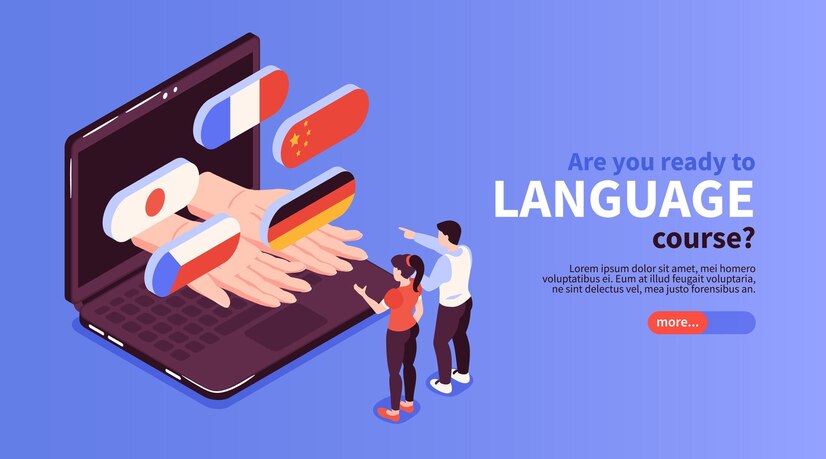In the quest to master a new language, grammar is often the battleground where many learners struggle. If you’ve been searching for a method that offers more than just rote memorization and passive exercises, you might want to explore AGL language learning. This innovative approach—standing for Active Grammar Learning—promises to revolutionize the way you grasp and use grammar in a new language. In this blog post, we’ll delve into seven powerful ways AGL language learning can transform your grammar skills and elevate your language proficiency.
Table of Contents
Embracing Contextual Learning for Deeper Understanding

One of the most transformative aspects of AGL language learning is its emphasis on contextual learning. Unlike traditional methods that often teach grammar in isolation, AGL integrates grammar into real-life situations and meaningful texts. This contextual approach helps learners see how grammar rules function in actual language use, rather than just theoretical exercises.
When you engage in AGL language learning, you’re not merely memorizing grammar rules; you’re applying them in context. This practical application deepens your understanding and makes the rules more intuitive. For example, instead of learning the rules of verb tenses through abstract examples, you might practice them by writing and speaking about real-life scenarios. This approach helps reinforce the grammar structures in a way that feels natural and relevant.
Interactive Exercises That Make Learning Fun
AGL language learning thrives on interactive exercises that make grammar practice engaging and enjoyable. Traditional grammar exercises can often feel tedious, but AGL turns practice into an interactive experience. Activities like role-plays, sentence construction games, and interactive quizzes are common in AGL.
These interactive exercises not only make learning more enjoyable but also provide immediate feedback. This instant feedback loop helps you identify mistakes and correct them in real time, enhancing your understanding and retention of grammar rules. By actively participating in these exercises, you’re more likely to remember and apply grammar rules effectively.
More Information Click Here
Feedback and Reflection: Key to Mastery

Feedback and reflection are crucial elements of AGL language learning. The process of receiving constructive feedback on your grammar usage helps you pinpoint areas of improvement. AGL emphasizes not just receiving feedback but also reflecting on it. This reflection allows you to understand why a particular usage was incorrect and how you can correct it in the future.
In AGL language learning, feedback is integrated into every practice session. Whether you’re participating in a conversation, completing a writing task, or engaging in a grammar game, you’ll receive feedback that helps you refine your skills. This continuous cycle of feedback and reflection accelerates your grammar mastery and builds confidence in your language abilities.
Gradual Progression for Steady Improvement
Another powerful feature of AGL language learning is its focus on gradual progression. Rather than overwhelming learners with complex grammar rules all at once, AGL introduces grammar points incrementally. This step-by-step approach allows you to build on what you’ve already learned, making the learning process more manageable and less daunting.
By mastering basic grammar concepts first, you create a solid foundation for more advanced topics. This gradual progression ensures that you’re not just memorizing rules but truly understanding them. As you advance through different levels of complexity, your confidence grows, and you’re able to apply grammar rules more naturally.
More Information Click Here
Leveraging Technology for Enhanced Learning
AGL language learning often incorporates technology to enhance the learning experience. From language learning apps to interactive online platforms, technology plays a significant role in making AGL effective and engaging. These digital tools provide interactive exercises, real-time feedback, and a wealth of resources at your fingertips.
Apps and online platforms designed for AGL language learning offer a variety of features such as gamified learning, interactive quizzes, and virtual conversation partners. These technological advancements make it easier to practice grammar skills anytime, anywhere. The convenience and accessibility of technology ensure that you can integrate AGL into your daily routine, making consistent practice possible.
Personalized Learning Paths for Individual Needs
AGL language learning also shines in its ability to offer personalized learning paths. Every learner has unique strengths and weaknesses, and AGL recognizes this by tailoring learning experiences to individual needs. Personalized learning paths ensure that you’re focusing on the areas that need the most improvement, rather than following a one-size-fits-all approach.
With AGL, you might start with a diagnostic assessment to identify your current grammar level and areas for growth. Based on this assessment, you’ll receive customized exercises and practice activities that target your specific needs. This personalized approach not only makes learning more efficient but also helps you achieve your language goals more effectively.
Building Confidence Through Practical Application

Finally, one of the most significant benefits of AGL language learning is the confidence it builds through practical application. By practicing grammar in real-life contexts and receiving immediate feedback, you develop a stronger sense of how to use grammar rules accurately and confidently. This practical experience helps you overcome the fear of making mistakes and encourages you to use your language skills more freely.
Conclusion
AGL language learning offers a dynamic and engaging approach to mastering grammar. By embracing contextual learning, interactive exercises, feedback and reflection, gradual progression, technology, personalized learning paths, and practical application, you can transform your grammar skills and elevate your language proficiency.
Whether you’re just starting your language learning journey or looking to refine your existing skills, AGL provides a powerful framework for achieving your goals. By incorporating these seven powerful strategies into your learning routine, you’ll experience significant improvements in your grammar skills and gain the confidence to use the language more effectively. So why wait? Dive into the world of AGL language learning today and unlock your full potential!
FAQ
What is AGL Language Learning
AGL Language Learning, or Active Grammar Learning, is an approach to mastering grammar through active and interactive methods rather than passive study. Unlike traditional grammar instruction that may focus solely on memorizing rules and doing repetitive exercises, AGL emphasizes applying grammar rules in context, engaging with the language actively, and receiving immediate feedback.
How Does AGL Language Learning Differ from Traditional Grammar Learning?
Traditional Grammar Learning often involves rote memorization of rules, with learners practicing isolated exercises that may not reflect real-world use. This approach can sometimes lead to a superficial understanding of grammar.
AGL Language Learning, on the other hand, integrates grammar into real-life contexts and practical applications. It involves interactive activities like role-plays, sentence construction games, and immediate feedback exercises. This method helps learners understand and apply grammar rules more effectively by seeing how they function in everyday language use.
What Are the Key Benefits of AGL Language Learning?
- Contextual Understanding: AGL helps learners see grammar rules in action through real-life scenarios, enhancing their ability to use these rules naturally.
- Engaging Activities: Interactive exercises make learning grammar more enjoyable and less monotonous, keeping learners motivated.
- Immediate Feedback: Learners receive prompt feedback on their grammar usage, allowing them to correct mistakes and understand concepts more deeply.
- Gradual Progression: AGL introduces grammar points incrementally, helping learners build a solid foundation before tackling more complex topics.
- Personalized Learning: Tailored exercises and learning paths address individual strengths and weaknesses, making the learning experience more effective.
- Technology Integration: Digital tools and apps used in AGL provide additional resources and practice opportunities, enhancing the learning process.
How Can I Get Started with AGL Language Learning?
To begin with AGL Language Learning, you can follow these steps:
- Find Resources: Look for language learning apps, websites, or courses that incorporate AGL principles. Many platforms offer interactive exercises and context-based learning.
- Set Goals: Determine what aspects of grammar you need to focus on. Setting clear goals will help you choose the right resources and activities.
- Practice Regularly: Consistency is key. Engage with interactive exercises and real-life applications of grammar rules on a regular basis.
- Seek Feedback: Use tools or platforms that provide feedback on your grammar usage. Reflect on this feedback to improve your skills.
- Reflect and Adjust: Periodically review your progress and adjust your learning strategies as needed.
What Are Some Examples of Interactive Exercises Used in AGL?
- Role-Plays: Simulating real-life conversations where learners practice grammar in context. For example, having a conversation in a restaurant to practice using the past tense.
- Sentence Construction Games: Creating sentences using specific grammar rules, such as forming questions with different verb tenses.
- Error Correction Activities: Identifying and correcting mistakes in sentences or passages, which helps reinforce correct grammar usage.
- Interactive Quizzes: Engaging in quizzes that adapt based on your performance, offering targeted practice and immediate feedback.
- Writing Prompts: Crafting short essays or stories based on specific grammar points, allowing learners to apply rules in a creative way.
Can AGL Language Learning Be Used for All Levels of Proficiency?
Yes, AGL Language Learning is versatile and can be adapted to various levels of proficiency:
- Beginners: Simple, context-based exercises and gradual introduction of basic grammar rules help build a strong foundation.
- Intermediate Learners: More complex grammar rules and interactive activities help refine skills and expand knowledge.
- Advanced Learners: Advanced exercises and real-life application scenarios challenge learners to use grammar more effectively in nuanced contexts.
How Does Technology Enhance AGL Language Learning?
Technology plays a significant role in enhancing AGL language learning through:
- Language Learning Apps: Many apps offer interactive exercises, gamified learning, and instant feedback, making grammar practice more engaging.
- Online Platforms: Websites that provide AGL-based resources, such as interactive exercises and personalized learning paths.
- Virtual Tutors: AI-powered tools and chatbots that simulate conversations and provide real-time feedback on grammar usage.
- Digital Resources: Access to a wide range of online materials, including grammar guides, practice exercises, and video tutorials.
- Tracking Progress: Technology helps track learning progress and identify areas for improvement through analytics and assessments.
How Important is Feedback in AGL Language Learning?
Feedback is crucial in AGL language learning for several reasons:
- Identifying Mistakes: Feedback helps learners recognize and understand their errors, allowing them to correct and learn from them.
- Reinforcing Correct Usage: Positive feedback reinforces correct grammar usage, boosting confidence and motivation.
- Guiding Improvement: Constructive feedback provides specific guidance on how to improve, focusing on areas where learners need more practice.
- Accelerating Learning: Immediate feedback accelerates the learning process by addressing mistakes in real-time and providing opportunities for rapid improvement.
What Are the Challenges of AGL Language Learning?
While AGL Language Learning offers many benefits, it can also present challenges:
- Initial Learning Curve: Adapting to interactive and context-based methods might require an adjustment period for some learners.
- Resource Availability: Finding high-quality AGL resources and tools may be challenging, depending on the language and proficiency level.
- Consistency: Maintaining regular practice and engagement can be difficult, especially for busy learners.
- Feedback Quality: The effectiveness of feedback depends on the quality of the tools or platforms used. Inadequate feedback can hinder progress.
How Can I Overcome the Challenges of AGL Language Learning?
- Start Slowly: Begin with simpler exercises and gradually progress to more complex tasks as you become more comfortable with AGL methods.
- Research Resources: Look for reputable language learning platforms and apps that offer AGL-based resources and positive user reviews.
- Schedule Regular Practice: Set aside dedicated time for practice to maintain consistency and ensure steady progress.
- Seek Quality Feedback: Choose tools and platforms that provide high-quality feedback or consider working with a tutor who can offer personalized guidance.
Are There Any Recommended Apps or Platforms for AGL Language Learning?
Several apps and platforms are well-suited for AGL Language Learning:
- Duolingo: Offers interactive exercises and gamified learning, focusing on context-based practice.
- Babbel: Provides grammar-focused lessons integrated with real-life conversation practice.
- Rosetta Stone: Features immersive learning with interactive exercises and contextual grammar usage.
- Grammarly: Helps with real-time grammar correction and feedback, especially for writing practice.
- Lingoda: Offers live online classes with a focus on active grammar learning and practical application.
How Does AGL Language Learning Compare to Other Modern Language Learning Methods?
AGL Language Learning stands out from other modern methods in several ways:
- Contextual Focus: Unlike methods that may prioritize memorization, AGL emphasizes understanding grammar in context.
- Interactivity: AGL involves more interactive and engaging exercises compared to some traditional methods.
- Immediate Feedback: The emphasis on real-time feedback is a key differentiator from methods that rely on delayed correction.
- Personalization: AGL often offers more personalized learning paths, catering to individual needs and proficiency levels.
- Integration of Technology: AGL makes extensive use of technology for interactive practice, which may not be as prevalent in other methods.
Can AGL Language Learning Be Combined with Other Learning Methods?
Absolutely. AGL Language Learning can be effectively combined with other methods to create a comprehensive learning approach:
- Traditional Methods: Use AGL to supplement traditional grammar instruction by providing practical application and interactive practice.
- Immersive Learning: Combine AGL with immersive experiences, such as language immersion programs or travel, to reinforce grammar skills in real-life contexts.
- Online Courses: Integrate AGL with online courses that offer structured lessons and additional practice opportunities.
- Language Exchanges: Participate in language exchanges or conversation practice to apply AGL principles in real-world conversations.
- Self-Study: Use AGL techniques alongside self-study materials to enhance your independent learning process.
How Can I Measure My Progress with AGL Language Learning?
Measuring progress in AGL Language Learning involves evaluating various aspects of your grammar skills:
- Self-Assessment: Regularly review and assess your understanding of grammar rules and your ability to apply them correctly.
- Feedback Analysis: Analyze the feedback received from interactive exercises and platforms to identify areas of improvement.
- Practice Tests: Take periodic practice tests or quizzes to gauge your proficiency and track progress over time.
- Real-Life Application: Evaluate your ability to use grammar rules effectively in real-life conversations, writing, and other language tasks.
- Learning Milestones: Set specific learning milestones and track your achievements as you progress through different grammar concepts and levels.
Is AGL Language Learning Suitable for All Ages?
Yes, AGL Language Learning is suitable for learners of all ages:
- Children: Interactive and engaging activities make AGL an effective method for younger learners, helping them build a strong foundation in grammar.
- Teens: AGL offers a dynamic approach that appeals to teenagers, providing practical application and interactive practice.
- Adults: Adults can benefit from the contextual and practical nature of AGL, especially when learning a new language for professional or personal reasons.
- Seniors: Seniors can also engage with AGL methods, adapting the approach to their learning preferences and pace.
Pros and Cons of AGL Language Learning
cons:
Real-Life Application: AGL focuses on teaching grammar in context, helping learners understand how rules apply in everyday communication. This approach bridges the gap between theoretical knowledge and practical use.
Improved Retention: Learning grammar through real-life scenarios and examples makes it easier to remember and apply rules correctly.
cons:
Complexity: Some learners might find it challenging to grasp complex grammar rules through context alone without a foundational understanding.
pros:
Interactive Activities: AGL uses interactive exercises like role-plays and games, making learning more engaging and less monotonous.
Variety: The use of diverse methods keeps learners motivated and interested in continuing their studies.
cons:
Initial Learning Curve: The shift from traditional methods to interactive AGL exercises may require an adjustment period for some learners.
pros:
Real-Time Learning: Instant feedback helps learners quickly identify and correct mistakes, reinforcing correct grammar usage.
Faster Improvement: Immediate correction accelerates the learning process by addressing errors as they occur.
Cons:
Dependence on Technology: Effective feedback often relies on the quality of technological tools, which may vary. Inadequate feedback can impede progress.
pros:
Incremental Progress: AGL introduces grammar concepts gradually, allowing learners to build on their knowledge systematically.
Solid Foundation: Starting with basic concepts and advancing to more complex ones helps in developing a strong grammatical foundation.
Cons:
Time-Consuming: Gradual progression may take more time compared to methods that introduce multiple concepts simultaneously.
pros:
Tailored Approach: AGL can be customized to fit individual learning needs, addressing specific areas where a learner may need more practice.
Focused Practice: Personalized paths help learners concentrate on their weaknesses and build on their strengths.
cons:
Resource Availability: Personalized learning paths may depend on the availability of high-quality resources and tools, which can vary. pros
Access to Tools: AGL incorporates language learning apps, interactive platforms, and digital resources that provide a wealth of practice opportunities.
Convenience: Technology enables learners to practice grammar anytime and anywhere, enhancing flexibility.
cons:
Technology Dependence: Relying heavily on digital tools may not suit all learners, especially those who prefer traditional methods or have limited access to technology.
pros:
Practical Application: Applying grammar rules in real-life contexts builds confidence in using the language effectively.
Reduced Fear of Mistakes: Regular practice and feedback help learners become more comfortable with making and correcting mistakes.
cons:
Initial Anxiety: Some learners may feel anxious about applying grammar rules in real-life situations, especially if they are not yet confident in their skills.
cons:
Expense: High-quality AGL resources, such as advanced apps or personalized tutoring, can be costly.
Limited Resources: Depending on the language and proficiency level, finding suitable AGL resources may be challenging.
cons:
Technology Limitations: Dependence on technology can be a drawback if the tools used are not well-designed or if there are technical issues.
Screen Time: Excessive use of digital tools may lead to increased screen time, which can be a concern for some learners.
cons:
Learning Curve: Transitioning from traditional grammar learning methods to AGL may be challenging for some learners, especially those who are used to more conventional approaches.
Adaptation Time: It may take time for learners to adjust to the interactive and contextual nature of AGL.
cons:
Inconsistent Feedback: The effectiveness of feedback can vary depending on the quality of the tools or platforms used. Poor feedback can hinder learning progress.
Lack of Personalization: Some automated feedback systems may not provide detailed or personalized insights, limiting their usefulness.






